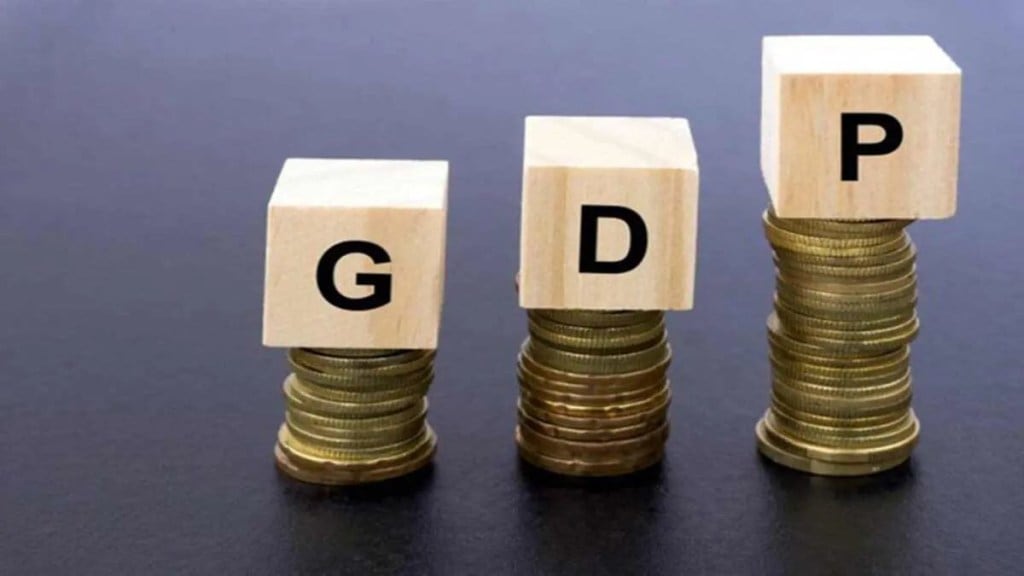A global slowdown, fading of pent-up domestic demand and the hike in interest rates are likely to slow down the country’s economic growth to about 6% in 2023-24, economists stressed after the NSO’s first advance estimates said the GDP will likely expand 7% in 2022-23, with growth rate of just 4.5% in the second half.
Economists that FE spoke to believe that nominal growth would be in the range of about 10-11% in the next fiscal as against 15.4% seen by the National Statistics Office (NSO) for the current year, as WPI inflation, which has a higher weight in the GDP deflator, will moderate significantly next fiscal.The national income data is a key input for the Finance Ministry as it makes its projections for the Union Budget 2023-24. This will be used for estimating important benchmarks, including the growth in tax revenue as well as the fiscal deficit.
In its December policy review, the Reserve Bank of India had pegged real GDP growth at 7.1% in the first quarter of FY24 and at 5.9% in the second quarter while noting that “the economy, however, faces accentuated headwinds from protracted geopolitical tensions, tightening global financial conditions and slowing external demand”. It has projected CPI inflation for the first quarter of FY24 at 5% and second quarter at 5.4% on the assumption of a normal monsoon. With a global slowdown, if not a full-scale recession likely, exports growth is also expected to be severely impacted and is likely to be in contraction, according to economists. While private final consumption may moderate, the government’s focus on investment is likely to continue and will be a key factor in fuelling economic growth next fiscal.
The slowdown in private final consumption expenditure is estimated to have already started and the NSO expects it to contract by 0.2% year on year in the second half of the current fiscal. Most economists have as yet, not firmed up projections on these parameters or FY24. Vivek Kumar, Economist, QuantEco Reasearch, said the agency has pegged GDP growth for FY23 at 6.8%, which is a tad lower than the NSO’s estimate.
“We expect real GDP growth to moderate to 6% in FY24 with nominal GDP growth closer to 10%. This slowdown will be largely external driven, which will lead to a contraction in exports. Domestic demand will also moderate as pent-up demand fades away and government prunes revenue expenditure.” The agency expects the government’s thrust on capex could strengthen next fiscal to keep the investment climate attractive for private participation. It also expects a sharp deceleration in inflation, led by WPI inflation, which should be about 2% in FY24 compared to 9.7% this fiscal. CPI inflation would be about 5.3% in FY24, moderating from 6.7% this fiscal. DK Joshi, Chief Economist, Crisil,said the agency expects GDP growth at 6% in FY24 with global factors playing a key role in the slowdown while the interest rate hikes would have some impact on growth as well. The slowdown in exports will spillover to manufacturing, which will have to be driven by domestic demand in FY24. Sectors like steel, cement will do well, he said, adding that manufacturing sector growth could be on the lines of the current fiscal.
He, however, expects merchandise exports to see a flattish growth in FY24 while services exports could see a growth. About 45% of the merchandise exports are to advanced economies and this would be impacted with a global slowdown, he noted. According to the NSO data, the real growth in PFCE is seen to have moderated to 7.7% in FY23 over FY22 while government consumption is estimated to grow by 3.1% this fiscal. Exports are seen to have picked up by 12.5% this fiscal. Manufacturing sector is estimated to have seen a mere growth of 1.6% this fiscal and there is expectation that the government would extend the Production Linked Incentive scheme to more sectors in the upcoming Budget.
“India’s growth outlook for FY24 remains clouded. Manufacturing sector could benefit frommoderation in commodity prices but will feel the pain of lower external demand. The risk of resurgence of Covid-19 cases globally could pose additional downside risk,” said Rajani Sinha, Chief Economist, CareEdge Ratings.

